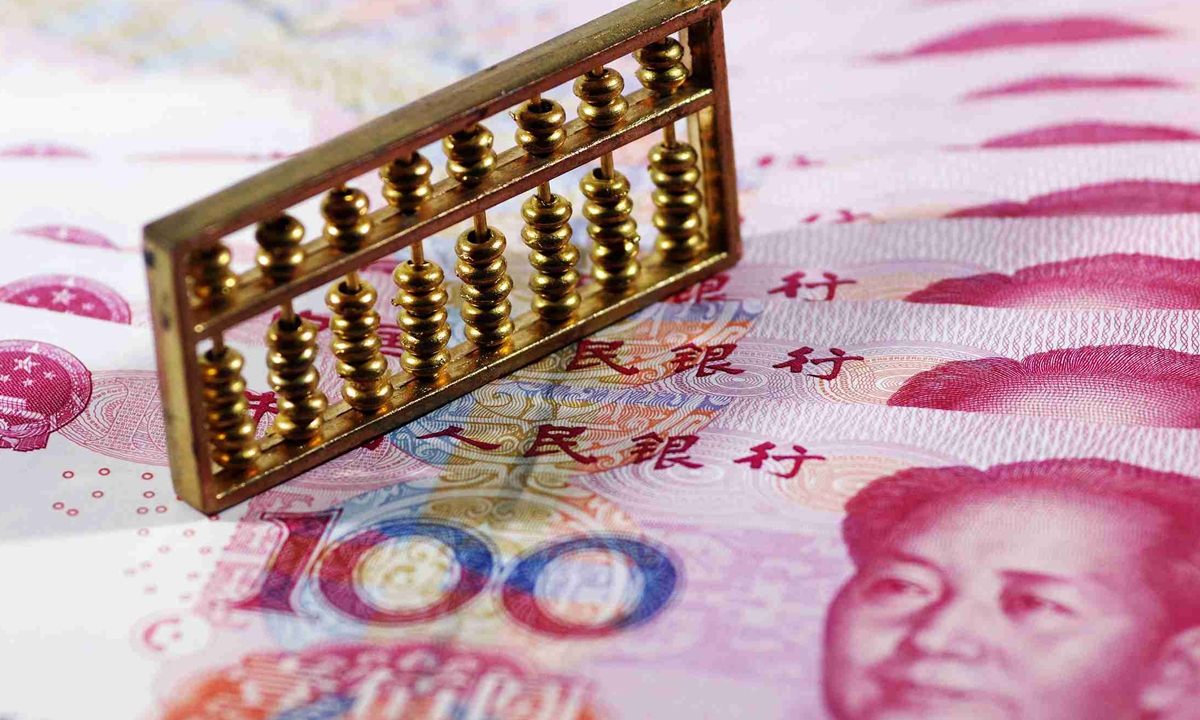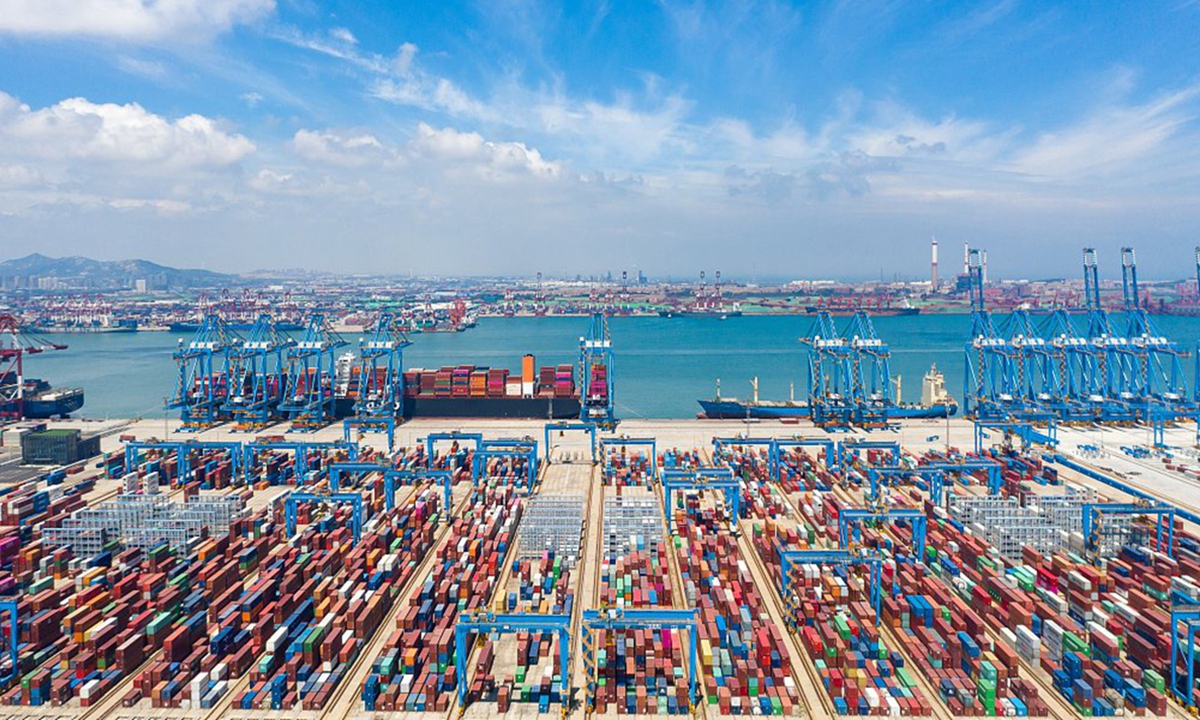

Chinese yuan Photo:VCG
Asian currencies have come under pressure from a strong US dollar in recent days, with the yen at one point hitting a 34-year low against the greenback. The development raised concerns about another Asian financial crisis, and the impact on Chinese yuan has become a topic of discussion.Amid other Asian currencies' volatility against the dollar, the yuan's performance demonstrates relative stability. Since the start of the year, the US Dollar Index has risen by about 4 percent, while the yuan has weakened by about 2 percent against the dollar at offshore currency markets.
But still, the yuan has remained relatively stable against other non-dollar currencies. According to the China Foreign Exchange Trade System (CFETS), the CFETS yuan exchange rate composite index, which measures the yuan's strength relative to a basket of currencies, reached 100.43 as of end-April, a 3.09 percent increase from the beginning of the year.
Exchange rates usually reflect the economic fundamentals of each country. To a certain extent, it is the resilience of the Chinese economy, the country's effective monetary policy and investor confidence in China's economic prospects that have jointly offered a solid foundation for the yuan's exchange rate.
In 2023, the Chinese economy grew by 5.2 percent year-on-year. In the first quarter of 2024, the GDP saw an unexpected growth of 5.3 percent year-on-year, indicating a strong start to the year.
First-quarter fixed-asset investment was up 4.5 percent year-on-year, with high-tech sector investments rising 11.4 percent, meaning China's economy continues to gain momentum, coupled with improved growth quality.
China's total merchandise trade expanded by 5.7 percent year-on-year in yuan terms in the first four months this year, official customs data showed on Thursday. Exports rose by 4.9 percent, while imports climbed by 6.8 percent.
With China's very strong economic fundamentals, the yuan's relative weakness against the US dollar is unlikely to bring big shocks to the Chinese economy or the country's financial market.
The yuan has been buttressed by the market operations and policy guidance of China's central bank, for the purpose of fending off risks of possible exchange-rate volatility and keeping the yuan at a reasonable equilibrium level against other major currencies.
If anything, the yuan's recent performance in a volatile global currency market is the best proof that China can resort to effective policy tools to withstand external shocks and maintain the relative stability of the yuan.
The yuan's rate will still be subject to multiple factors, including the global economic recovery, changes in major economies' monetary policies and international geopolitical conditions.
However, the overall policy tone of seeking progress while maintaining stability in the financial sector, which could also suit the currency market, indicates that the yuan's exchange rate is expected to remain basically stable at a reasonable equilibrium level.
Maintaining the basic stability of the yuan represents stability, while the internationalization of the yuan represents progress. No matter how the external situation changes, it is believed that this general direction for the currency will not change.
The stability of the yuan's exchange rate not only reflects the steady development of the Chinese economy but also creates favorable conditions for its foreign trade and overall economic transformation and upgrading. With the steady growth of the Chinese economy and the gradual opening-up of the financial market, a relatively stable yuan is expected to continue to provide a strong support for the development of the Chinese economy.
The author is founding director of China Institute of New Economy. bizopinion@globaltimes.com.cn



